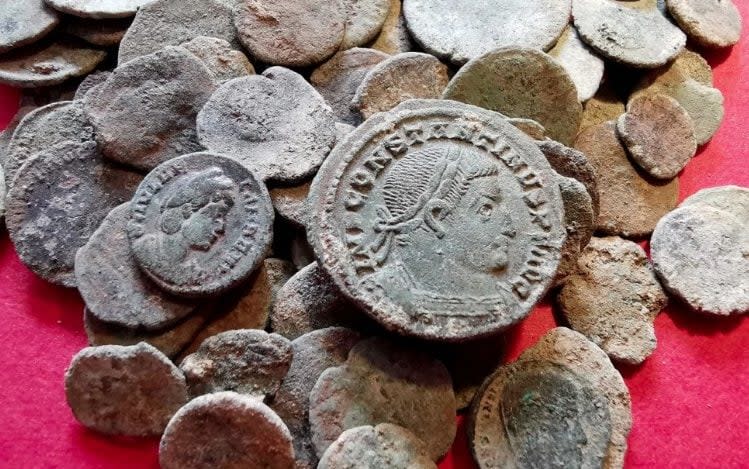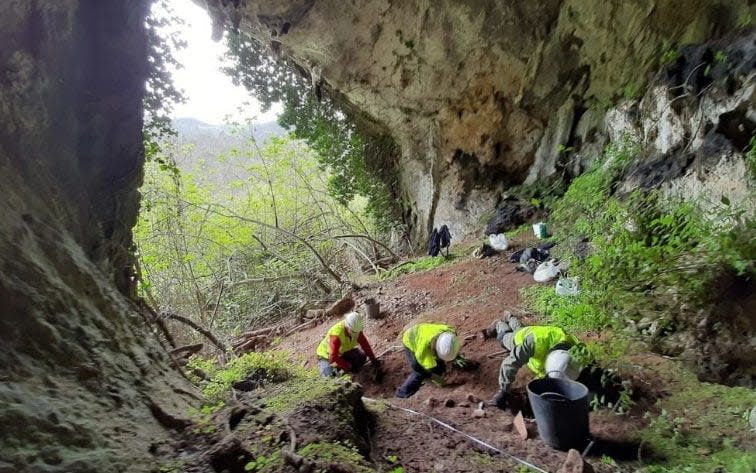Sett for life as badgers root out Roman coin hoard

One the largest troves of Roman coins found in northern Spain has been unearthed in a cave thanks to a cete of hungry badgers.
The badgers are thought to have rooted out the treasure while on a hunt for dinner amid the swirling snow drifts of a strong winter storm.
Researchers, who have hailed an "exceptional find", believe the animals scratched in desperation at a crack in the earth next to their den in a cave near Grado, Asturias, in search of edible roots – and dug up the coins instead.
Disappointed by a lack of earthworms or berries, the badgers left their find in the open near the entrance to the setts where a team of archaeologists later came across them, according to a research paper.

Researchers looked for more treasure and, having located the crack where the hoard was hidden, eventually found 209 coins, forged in places as far afield as Constantinople and London and seemingly hidden in the late fifth century, a time when Roman civilisation in Asturias was losing ground in wars against Germanic invaders.
“This was a significant moment of expansion by the Suebi people in northwestern Iberia, with the area around Grado being a frontier territory”, archaeologist Alfonso Fanjul told El País newspaper.
The researchers believe the pieces found are only “a secondary deposit”, adding that there may be more coins in the cave, possibly deeper in the ground due to the burrowing activity of animals such as badgers.
The 209 coins were made of copper, bronze and, in the case of the largest of the haul, a 10-gram follis minted in Roman London – four per cent silver.
It is not the first time archaeologists have found treasure in the thickly wooded hillsides of Grado, with 14 gold coins from the reign of Emperor Constantine I having been uncovered nearby in the 1930s.
“The accumulation of significant finds could – with caution – be seen as a response to the intense conflict experienced in this border territory,” said Dr Fanjul.

